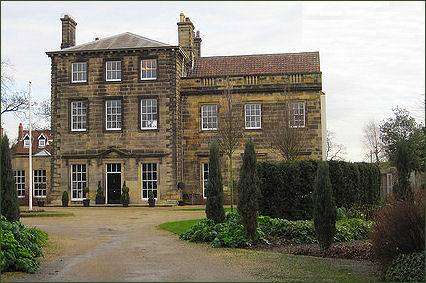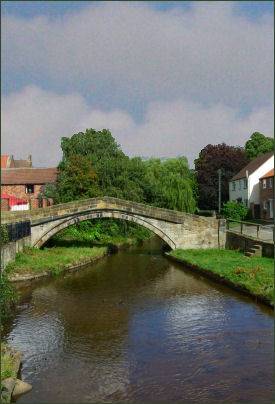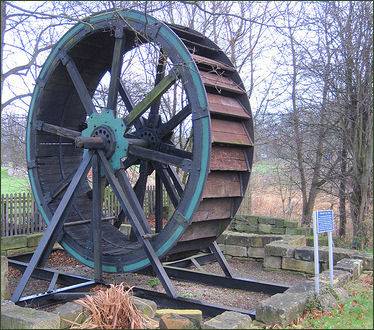Stokesley
OS grid reference:- NZ 524 087
 The small market town of Stokesley is situated in the Hambleton district of North Yorkshire, it lies to the north of the North York Moors National Park and on the banks of the River Leven, which joins the River Tees at Yarm. Stokesley is located about two miles south of the boundary of the borough of Middlesbrough and ten miles south of Middlesbrough town centre.
The small market town of Stokesley is situated in the Hambleton district of North Yorkshire, it lies to the north of the North York Moors National Park and on the banks of the River Leven, which joins the River Tees at Yarm. Stokesley is located about two miles south of the boundary of the borough of Middlesbrough and ten miles south of Middlesbrough town centre.
Stokesley has an historic cobbled high street, lined with many independent small shops and restaurants. The town is also the home of Quorn, produced by Marlow Foods. There are many grade II listed buildings of special architectural or historic interest. These are Barclays Bank on the High Street, Handyside Cottage, a Grade II listed building dating to the mid eighteenth century, the Manor House (pictured left), an imposing building at the eastern end of the Market Square, and the Old Rectory which dates to the early eighteenth century.
 The characterful Pack Horse Bridge, situated just off the Market Place, crosses the River Leven from the riverside walk and dates from the seventeenth century. It was once the main route into Stokesley from the south. The town is famous for its large range of architectural types and contains a number of fine Georgian buildings.
The characterful Pack Horse Bridge, situated just off the Market Place, crosses the River Leven from the riverside walk and dates from the seventeenth century. It was once the main route into Stokesley from the south. The town is famous for its large range of architectural types and contains a number of fine Georgian buildings.
. Other prominent historical features in Stokesley include the Mill Wheel (pictured below left), thought to represent the site of a mill recorded in the Domesday Survey of 1086. The water wheel dates from around 1850 and was part of Fidlers Mill, which was demolished in 1983. The Domesday Book also contained the first written record of "a church and priest" in Stokesley, in 1086 the manor was held by one Uhtred, described as the King's thegn, but by the 1090's it had passed to the Balliol family.
 The Church of St Peter and St Paul is the oldest building in the town, it has a later medieval tower and chancel, with a Georgian nave which wasbuilt around 1777. The church is situated just off the market Plain and has colourful twentieth century stained glass and some woodwork carved by the famous Mouseman of Kilburn.
The Church of St Peter and St Paul is the oldest building in the town, it has a later medieval tower and chancel, with a Georgian nave which wasbuilt around 1777. The church is situated just off the market Plain and has colourful twentieth century stained glass and some woodwork carved by the famous Mouseman of Kilburn.
Stokesley Town Hall, in the centre of the town, was built in 1853 in the Italianate style, at the expense of Colonel Robert Hildyard. It replaced an older town house and toll booth. Originally this had an open arcade (butter market) at the rear.
The inaugural meeting of the Stokesley Agricultural Society was held at the Golden Lion Hotel, now Chapters Hotel, in 1859. This boutique hotel was also used as the local law courts for the area being ideally placed between Middlesbrough and Northallerton. There is a weekly market held on a Friday in the large main square called the Plain. A farmers' market takes place on the first Saturday of each month.
A four-day fair is held every September in the town centre. The fair spans the full length of the high street and rides such as the KMG Equinox-Tango, the Extreme, Vertigo and various Crows rides attend. The fair always begins on a Wednesday evening and runs until the Saturday, opening all day on the Saturday due to the annual agricultural show which takes place on the showground
